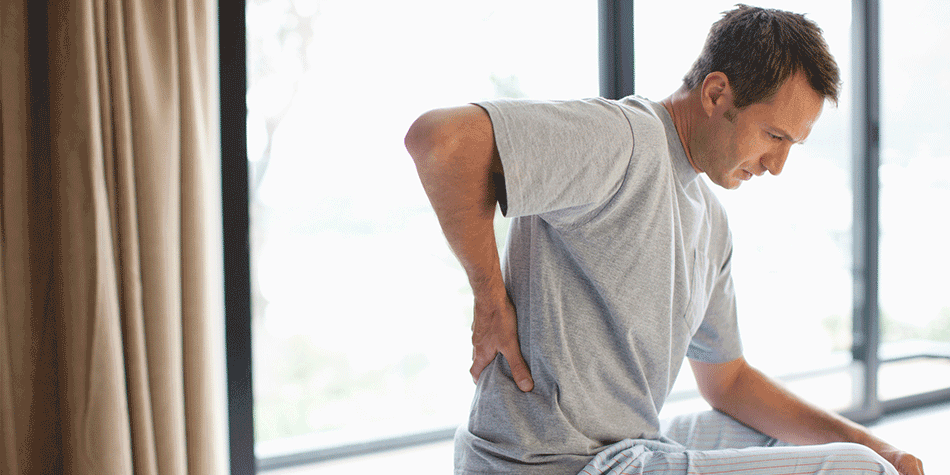
What does it actually mean to “throw out your back?”
“It means you have an acute onset of low back pain, in the lumbar region of their spine, just below their ribs and just above their pelvis,” says Physical Therapist Kimberly Waters.
Fortunately, throwing your back out is usually a temporary situation, and there are ways to speed recovery and help prevent it from happening again. Here's what you should know.
Who throws out their back?
Incidents involving acute back pain can happen to anyone, but become increasingly common with age. While people with physically demanding jobs are more prone, office workers who sit for long periods of time with inadequate back support can be affected, too. Poor physical fitness is another risk factor; those who don't get much activity have higher odds of lower back issues, as do “weekend warriors.” “These are people who are normally sedentary throughout the week, and then on the weekends, they go play golf for a few hours, or go play softball or soccer,” says Waters. In this case, the pain is triggered by a brief bout of intense exercise following a longer period of little movement.
What happens, exactly?
Most often, when someone throws their back out, it's thought to be due to a muscle strain, caused by lifting a heavy item or bending the wrong way. "The muscle can tighten up or go into spasm, and the spasm is what causes the pain," says Waters. The pain can vary, but it will likely remain localized around your lumbar spine – the five vertebrae positioned right above your buttocks.
Very occasionally, acute lower back pain is triggered by something more serious, such as an infection, a broken vertebra or even cancer. These problems are likelier in people over 50, those who have already had cancer, people on long-term steroids, heavy drug users and adults with pre-existing medical conditions.
Seek immediate medical attention if you experience any of the following emergency symptoms, as well:
- Pain, weakness or loss of feeling in your legs
- Severe pain that greatly limits your ability to do simple things
- Bladder or bowel control issues
- Weight loss you're unable to explain
- Fever or symptoms of illness
How to get relief:
Usually, the pain caused by throwing your back out goes away on its own, and you won't need to see a medical professional.
In the first 72 hours following the event, Waters suggests applying ice to ease the pain, and says heating pads may come in handy after the third day. Neither will help your recovery per se, but they may ease your ache in the moment.
Certain over-the-counter drugs like acetaminophen and ibuprofen may help relieve the pain as well. Just make sure you speak to a doctor about which medications to take first.
Remember: moving helps
In the days after you throw your back out, resting may feel good, but staying moderately active is proven to help with recovery by stimulating blood flow, increasing flexibility and preventing spasms.
While you're recovering, skip high-impact activities and steer clear of BLT – "bending, lifting and twisting," says Waters. "You don't want to bend over at your waist to reach down to the floor. You don't want to lift anything too heavy."
Preventing future incidents
When it comes to keeping your lower back healthy, proper body mechanics are the name of the game.
To help stave off sudden injuries, learn:
- Good posture
- The right way to bend over
- How to lift, push and pull objects correctly
Regular physical activity is also crucial. "Keeping your core and legs strong, keeping your quadriceps strong – those are your lifting muscles," Waters says. Maintaining flexibility is key, as well, since muscle groups can become tighter as you grow older.
Ultimately, you can't predict where or when you'll throw your back out – but with a few simple precautions, you can reduce the odds and save yourself a few days of pain.
This article orginally appeared on Sharecare.com
Take our Free Back & Neck Pain Quiz
$webqFacilityNumber
Need a Physician?